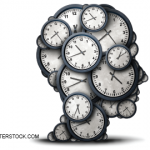Talk is not enough. A colleague of mine likes to say that the answer is money, no matter what the question is, and that rule probably applies in this case as well. Addressing burnout will result in obvious long-term gains, but at short-term cost. Convincing our administrators that the short-term cost is worth it is our responsibility, and it is an important burden to bear, because we cannot care for others if we cannot care for ourselves.
I was thinking about all of these issues on my drive home from Richmond. I spent an hour at the memorial service, and with a two-plus hour drive to Baltimore, I arrived back at my house around 10 at night. I sank into a chair, put up my feet and nodded off, exhausted by the day’s events.
The next morning, I went to work.
Philip Seo, MD, MHS, is an associate professor of medicine at the Johns Hopkins University School of Medicine, Baltimore. He is director of both the Johns Hopkins Vasculitis Center and the Johns Hopkins Rheumatology Fellowship Program.
Fast Facts: Rheumatologists Are Burning Out—Fast
In 2017, rheumatologists were the 6th most likely group to report experiencing burnout, topped only by specialists in emergency medicine, obstetrics and gynecology, family medicine, general internal medicine and infectious disease.7 Just two years prior, rheumatology was toward the bottom of that list, with only allergy, ophthalmology, gastroenterology, pathology, psychiatry and dermatology reporting greater levels of job satisfaction.
Fast Facts
- Rates of burnout and depression are substantially higher among physicians than they are among the general population.1
- Physicians reporting one or more symptoms of burnout have a 43% greater likelihood of reducing their clinical responsibilities in the ensuing 24 months.8
- Every year, 7% of physicians will withdraw from providing clinical care because of burnout.11
- Every year, 400 physicians take their own lives.10
References
- Shanafelt TD, Hasan O, Dyrbre LN, et al. Changes in burnout and satisfaction with work-life balance in physicians and the general US working population between 2011 and 2014. Mayo Clin Proc. 2015 Dec;90(12):1600–1613.
- Physician burnout is on the rise. CBS News. 2017 May 15.
- Herrington C. Hospitals address physician burnout by focusing on mindfulness, empathy. Peoria Public Radio. 2017 Jun 21.
- Halbesleben JR, Rathert C. Linking physician burnout and patient outcomes: Exploring the dyadic relationship between physicians and patients. Health Care Manage Rev. 2008 Jan–Mar;33(1):29–39.
- Lyndon A. Burnout among health professionals and its effect on health safety. Patient Safety Network, Agency for Healthcare Research and Quality. 2016 Feb.
- Peckam C. Rheumatologist lifestyles—linking to burnout: A Medscape survey. Medscape. 2013 Mar 28.
- Peckham C. Bias, burnout, race: What physicians told us about the issues. Medscape. 2017 Jan 10.
- Shanafelt TD, Dyrbye LN, West CP, Sinsky CA. Potential impact of burnout on the US physician workforce. Mayo Clin Proc. 2016 Nov;91(11):1667–1668.
- Saylers MP, Bonfils KA, Luther L, et al. The relationship between professional burnout and quality and safety of healthcare: A meta-analysis. J Gen Intern Med. 2017 Apr;32(4):475–482.
- Dewa CS, Loong D, Bonato S, Trojanowski L. The relationship between physician burnout and quality of healthcare in terms of safety and acceptability: A systematic review. BMJ Open. 2017 Jun 21;7(6):e015141.
- Linzer M, Guzman-Corrales L, Poplau S. Preventing physician burnout. AMA Steps Forward.
- Wright AA, Katz IT. Beyond burnout—redesigning care to restore meaning and sanity for physicians. New Engl J Med. 2018 Jan 25;378(4):309–311.
- Shakespeare W. Julius Caesar, Act I, Scene III, L 140–141.
- Ryan T. A Mindful Nation: How a simple practice can help us reduce stress, improve performance, and recapture the American spirit. Carlsbad, Calif. Hay House Self Publishing, 2012.
- Shanafelt TD, Noseworthy JH. Executive leadership and physician well-being: Nine organizational strategies to promote engagement and reduce burnout. Mayo Clin Proc. 2017 Jan;92(1):129–146.
- Erikson M. Good leadership, self-compassion key to tackling physician burnout. Stanford Medicine News Center. 2017 Oct 17.
- Rosenfeld J. Fighting physician burnout at three levels. Medical Economics. 2017 Nov 16.
- Swensen S, Shanafelt T, Mohta NS. Leadership survey: Why physician burnout is endemic, and how health care must respond. NEJM Catalyst Insights Report. 2016 Dec 8.

